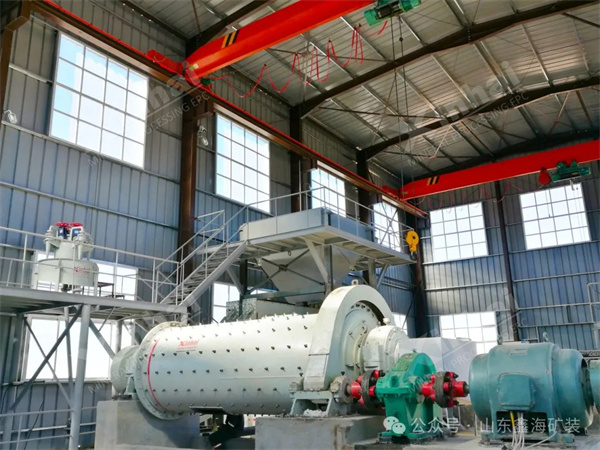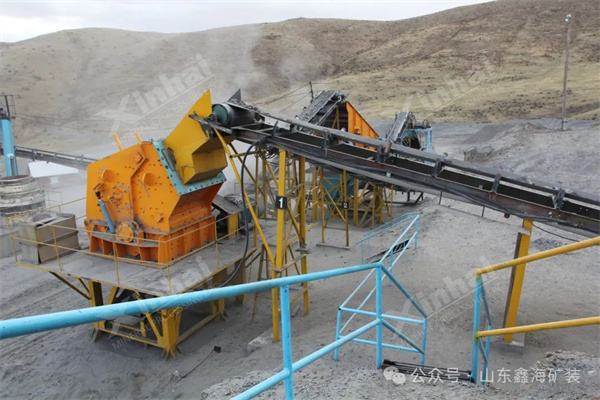The mineral processing industry has developed to this day, and the slogan of "more crushing and less grinding" has been shouted for many years. However, few people have mentioned how to make this slogan a feasible energy-saving strategy. Based on years of mineral processing experience, Xinhai Mining proposes three directions to make the slogan of "more crushing and less grinding" no longer empty talk.

To optimize the crushing and grinding process, the first step is to consider the crushing and grinding operation as a whole. Grinding operations have high energy consumption and low efficiency, while the energy consumption of crushing operations is only 8% to 12% of that of grinding operations. Therefore, we should focus on balancing crushing and grinding capabilities. The specific operation method is as follows:
(1) Reasonably adjust the discharge port of the crusher, appropriately reduce the grinding particle size, reduce the pressure in the grinding section, and improve the grinding efficiency.
(2) Add a pre selection process, which can remove gangue minerals, enrich useful minerals in advance, reduce grinding volume, and thereby improve grinding efficiency.
(3) Use rubber lining plate and magnetic lining plate technology. Moderate addition of grinding media based on actual conditions, strict control of media shape, volume, addition amount, and time interval, can increase grinding yield, reduce energy consumption, and achieve the goal of more crushing and less grinding.

The energy consumption in the grinding stage is usually higher than that in the crushing stage, so the discharge particle size should be controlled as much as possible in the crushing stage to reduce the load of the grinding stage. The control of the discharge particle size during the crushing stage can be achieved through the following methods:
(1) Choose appropriate crushing equipment and adjust the size of the discharge port
For example, within an appropriate production range, the minimum discharge particle size of a jaw crusher can be adjusted to about 40 millimeters, while the discharge particle size of a cone crusher can be adjusted to about 5 millimeters. Of course, the selection of equipment depends not only on the size of the discharge port, but also on factors such as the inlet and output. Generally speaking, the larger the inlet and outlet, the higher the output.
(2) Reasonably allocate the total crushing ratio
This is an important parameter for adjusting the crushing process, including increasing the crushing ratio of coarse or medium crushing, increasing the number of crushing sections, and changing from open circuit crushing to closed circuit crushing. The crushing ratio of each section depends on the nature of the ore, the performance of the equipment, and the type of crushing section. If the crushing process remains unchanged and the processing capacity is ensured, reducing the size of the ore discharge port and slightly increasing the crushing ratio of each section can unleash the potential of the crusher.
In order to save costs, crushing and grinding equipment account for the main part of the cost in the production of mineral processing equipment, and the production cost of grinding equipment is usually higher than that of crushing equipment.
(1) Mineral processing plants often use the following crushing equipment:
Jaw crusher, with high production capacity, large crushing ratio, and high crushing efficiency, is mainly used for coarse crushing;
Hammer crusher, single rotor ring hammer design, suitable for handling low hardness and brittle materials;
Spring cone crusher, used as a medium and fine crushing equipment, the spring not only serves as a safety device but also affects the crushing force. The standard type is suitable for medium crushing, the medium type is suitable for medium and fine crushing, and the short head cone crusher is suitable for fine crushing;
The single cylinder hydraulic cone crusher adopts a hydraulic system to adjust the ore discharge port and has overload protection function.
(2) Common grinding equipment in mineral processing plants:
In terms of grinding equipment, ore dressing plants usually use ball mills, with two common types of ball mills: overflow type and grid type. Choose the type of grinding machine based on the technical indicators of mineral processing.
Grid type ball mills have fast ore discharge, coarse particle size, and high processing capacity, and are generally used for one-stage grinding operations;
Overflow type ball mills are suitable for concentrate regrinding operations, with longer grinding time and lower processing capacity, but can obtain qualified products with finer particle size. They are generally used for two-stage grinding operations.
Such equipment selection and adjustment can not only meet the requirements of mineral processing technology, but also achieve cost savings.
According to statistics, investment in crushing and grinding equipment accounts for 65% to 70% of the total investment in the entire beneficiation plant, and electricity consumption accounts for about 50% to 65%. The energy consumption of grinding operations is higher than that of crushing operations, so "more crushing and less grinding" should not be just a slogan, but should be deeply applied to every beneficiation plant and production line, considering the above three directions, and effectively implementing the energy-saving strategy of "more crushing and less grinding".